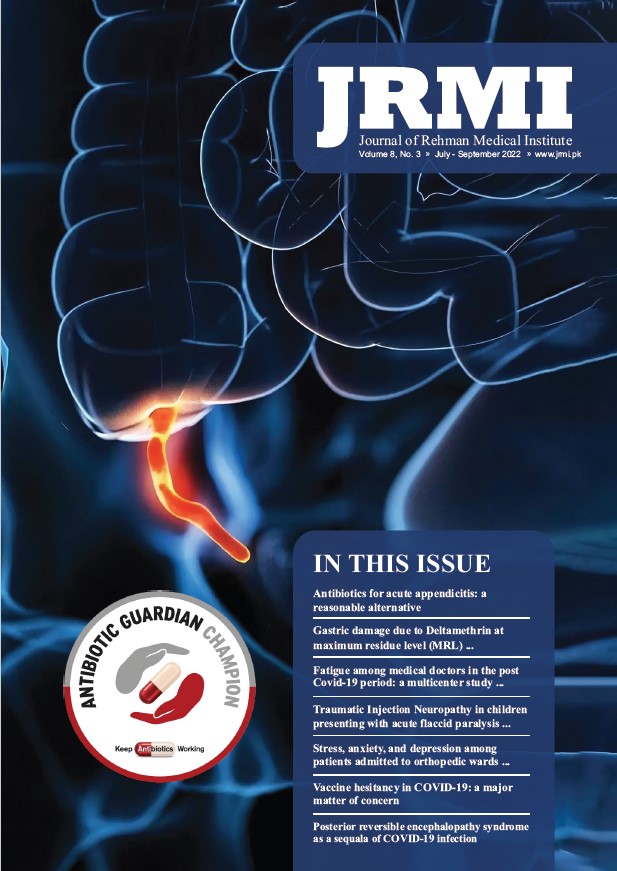Gastric damage due to Deltamethrin at maximum residue level (MRL) and its auto-reversal in adult Wistar rats
DOI:
https://doi.org/10.52442/jrmi.v8i3.480Keywords:
Pyrethrins, Gastritis, Visual Analogue Scale (VAS), Rats, WistarAbstract
Introduction: Deltamethrin is a useful pesticide when applied judiciously to crops. However, it has also dose-dependent toxic effects on stomach once ingested with sprayed crops. Its maximum permissible limit (MRL, Maximum Residue Level) as pesticide food residues is 5mg/kg body weight as defined by WHO. Though there is still a potential of causing harm at these levels and may be a serious potential health hazard.
Objective: To determine the severity of gastritis induced by Deltamethrin administered at MRL doses to adult Wistar rats and the extent of spontaneous auto-reversal over three weeks.
Materials & Methods: In this two-phase experimental subacute toxicity study of seven weeks carried out at the Institute of Basic Medical Sciences, Khyber Medical University, Peshawar, Pakistan, 24 adult Wistar rats were divided into six subgroups. In Phase I, two negative control sub-groups (A-1, A-2) were kept on normal diet while two positive control sub-groups (B-1, B-2) were given oral Indomethacin (2mg/kg body weight) to induce gastritis. One of each control groups was then dissected, while other one left under observation for auto-reversal in phase II. Out of the two treatment sub-groups (C1, C-2), one group was given deltamethrin (5mg/kg body weight) orally in phase I and then culled. The second group was first given deltamethrin (5mg/kg body weight) in phase I and then left under observation for auto-reversal, during phase II and all were culled at its end. The stomach samples were collected and processed to obtain histology slides for analysis via microscopy and micrometry. Grading was done to look for changes according to the Visual Analogue Scale (VAS), and Operative Link on Gastritis Assessment (OLGA).
Results: The experimental Deltamethrin group when compared to negative and positive control groups, revealed moderate changes in rat stomach histomorphology while auto-reversal group showed mild severity changes.
Conclusion: Deltamethrin administered in a permissible MRL dose induced substantive changes in rat gastric mucosa, with partial spontaneous auto-reversal of gastritis, showing the potential persistent danger of Deltamethrin once it has been introduced into the body.




